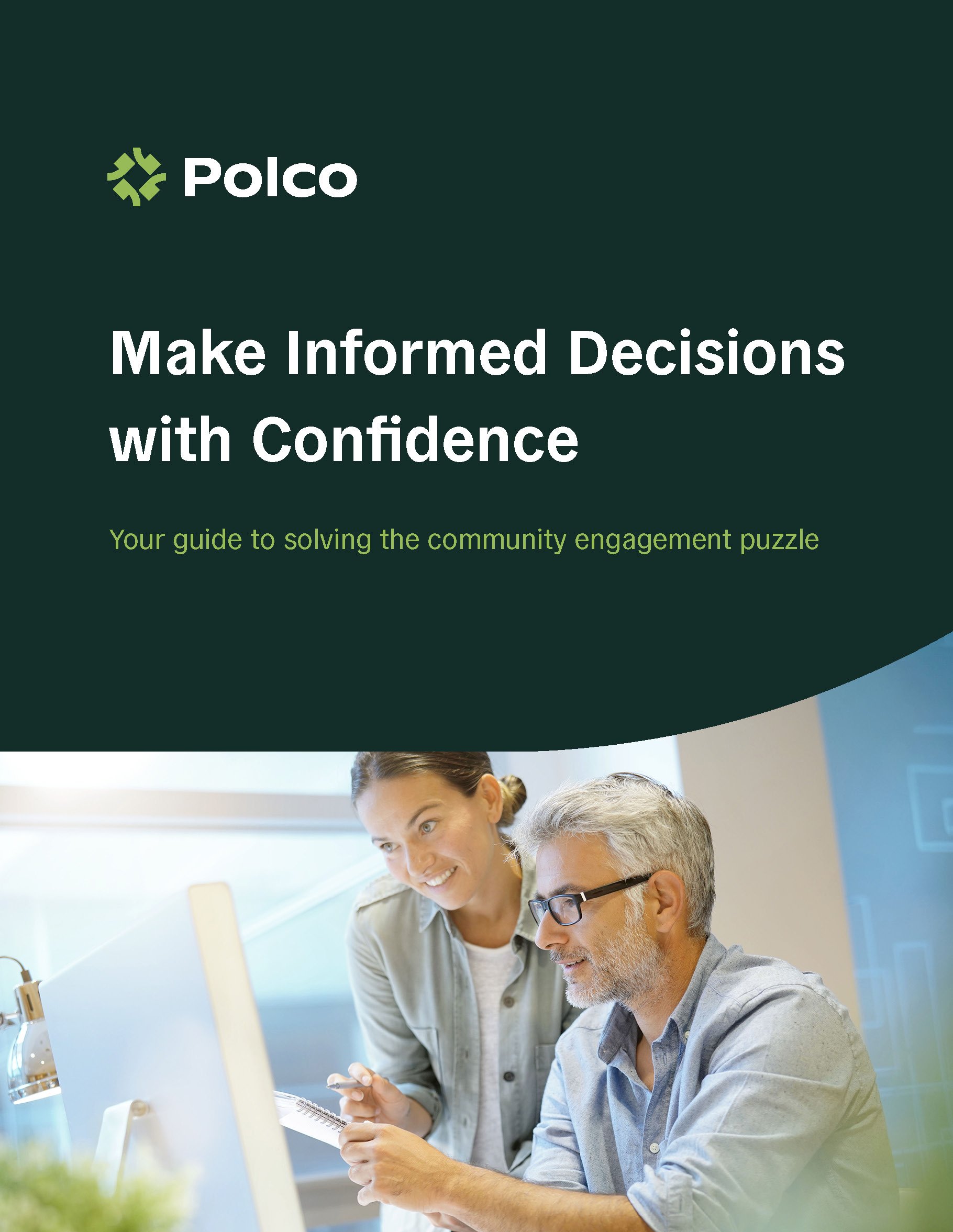Share this
Subscribe to Our Newsletter

Featured Report
Download your copy of "Make Informed Decisions with Confidence: Solving The Community Engagement Puzzle" today!
by Jen Aceto on June 6, 2022

- By Jen Aceto -
Collecting data is only half the battle. Once results are in, it’s important to create and execute a plan.
Below are six strategies to help your organization use resident input in long-term planning. Your next steps will partly depend on the type of survey you conducted. For example, how you use The National Employee Survey insights will differ from how you use The National Community Survey insights. Your city’s next steps may be to update a comprehensive plan, ask residents or employees further questions about critical focus areas, or make a policy decision. No matter which survey you’ve administered, keep the following “6 Es” in mind as you engage with your community and fellow leaders after the results are in.

Results inform how officials can take action to move their communities forward. For instance, Pearland, Texas’ survey results showed a need for improved mobility. City officials used this information to identify key areas for strategic transportation planning.
We’ve seen many cities use the data from The National Employee Survey to evaluate internal staffing needs. The results from The National Community Survey help community leaders create a strategic, land use, or comprehensive plan.
What’s Next: Make the results of your benchmark survey available to residents on the City’s website, so your community can see outcomes. Include a short Polco poll (which you can easily embed on your government website) or link to a brief Polco survey where residents can share their insights on next steps.

Data can help identify where different organizations or various departments within one local government can connect. Partnerships between local governments and the private sector, school districts, or resident advocacy groups can drastically improve community outcomes. After analyzing the results from The NCS, Hamilton, Ohio, partnered with Marriott to finance a hotel that anchored the river walk and strengthened economic development.
What’s Next: Follow up on your benchmark survey results with a short online survey from the Polco Library, such as the Community Equity and Inclusion Survey. Consider partnering with community groups, such as local advocacy groups, to get the word out.

Utilize marketing and communication techniques to rebrand or correct resident misconceptions of the community and its services. Share the ways that the city is listening to residents, and how city staff are responding in light of resident input.
Based on resident feedback, Greeley, Colorado, wanted to improve its reputation as a desirable place to live and work. The City Council established a marketing campaign to change resident perspectives about their City, as well as Greeley’s reputation in neighboring towns.
What’s Next: If you have a PIO, marketing, or communications manager, talk to them about the best ways to engage residents through benchmark surveys, short follow-up surveys, action plans, and next steps. For ongoing engagement, use the Sources of Information survey in the Polco Library to learn about the communication channels that work best to reach your residents.

Designate funds in the budget for areas of improvement. In Pocatello, Idaho, residents made a case to the City Council that the local animal shelter was in poor condition. In a Polco survey, 85 percent of residents surveyed said they would support funds to improve the shelter. Within a year, residents approved a $2.8 million bond issue to rebuild the facility.
What’s Next: Talk to the CFO, finance department, or other analysts about next steps. Use the Government Spending survey from the Polco Library to get input from residents on fund allocation.

Policies are key tools for improving communities. Policies may modify land use zoning, improve recycling, and add or remove regulatory requirements. In Boulder, Colo., affordable housing is rare. In response to resident feedback on The NCS, Boulder City Council approved an ordinance to permit accessory dwelling units, small additions to homes in residential neighborhoods where tenants are allowed to live.
What’s Next: Collaborate with residents on next steps with short surveys on Code Enforcement, Community Amenities and Development Priorities, and Affordable Housing.

Evaluating your efforts can help you measure the impact of your decisions on the community. Typically, planned evaluation can help determine the impact of changes you’ve enacted. Often, local governments establish performance measures and targets for tracking progress toward goals without planning regular evaluations. In Decatur, Georgia, part of performance tracking includes data from residents’ opinions, as well as traditional measures of government output, all integrated into the annual report.
What’s Next: Look at your survey results in aggregate. Use the results from both your benchmark and short surveys throughout the year to see areas of improvement. Talk to your Customer Success Manager about the most effective ways to use short, ongoing surveys to evaluate your progress on action items.
The 6 Es are the roadmap to implementing effective, community-backed policy. Implementing these strategies ensures that your survey results don’t just sit on a shelf. Instead, they become the foundation for data-driven decisions, performance measurement, and planning for your community’s future.
Related Articles

Download your copy of "Make Informed Decisions with Confidence: Solving The Community Engagement Puzzle" today!
These Related Stories


